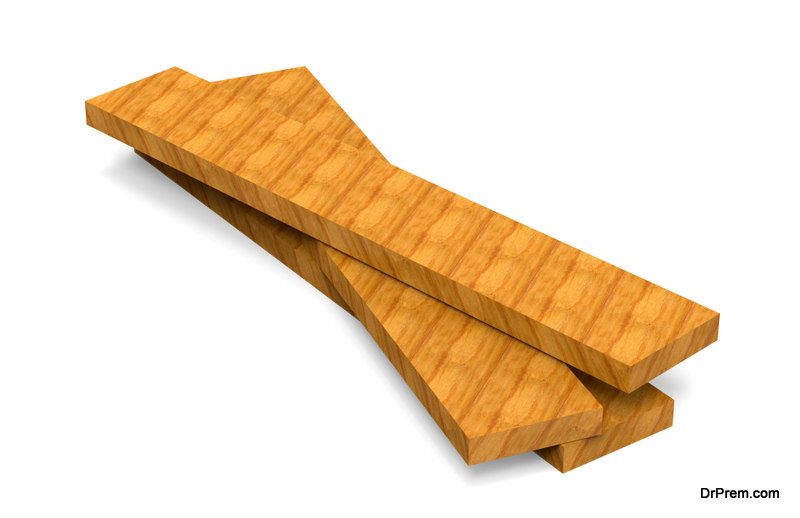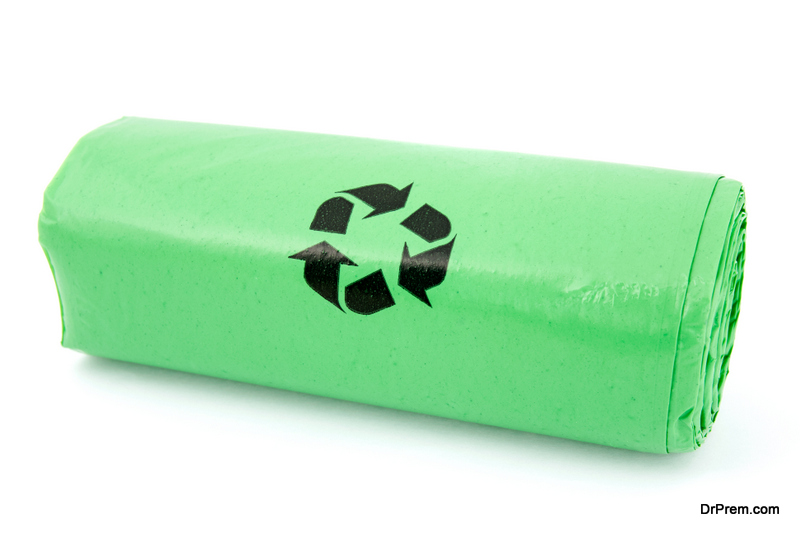The world is facing two more crisis like situation. First, where to get the resources to fulfill our rising needs. Second, how to dispose of the garbage that we produce on a massive scale. If we somehow link the first to the second, then that might help in solving the problem. If we know how to create something substantial from the very waste that we are producing, then it would be a great triumph. This involves using all three R’s. Although it is not possible in every case, we can certainly use certain waste products like liquid wood.
What is liquid wood?
 Liquid Wood is a thermoplastic material. You can get it using byproducts of the wood pulp industry. It can replace plastic materials made from petroleum. As the reserves of petroleum products are finite and forecast to run out in as little as 30 years, the world is looking for alternatives for all forms of petroleum usage. This discovery of a renewable source for thermoplastics by the Fraunhofer Institute of Chemical Technology (ICT) in Germany promises to provide an alternative material for the many applications for plastics. Tecnaro is the company spun off by ICT to promote commercial applications for liquid wood which is now trademarked as Arboform.
Liquid Wood is a thermoplastic material. You can get it using byproducts of the wood pulp industry. It can replace plastic materials made from petroleum. As the reserves of petroleum products are finite and forecast to run out in as little as 30 years, the world is looking for alternatives for all forms of petroleum usage. This discovery of a renewable source for thermoplastics by the Fraunhofer Institute of Chemical Technology (ICT) in Germany promises to provide an alternative material for the many applications for plastics. Tecnaro is the company spun off by ICT to promote commercial applications for liquid wood which is now trademarked as Arboform.
How to make liquid wood?
 Liquid Wood consists of lignin which is a waste product from the wood pulp industry. First, you have to separate wood into lignin, cellulose and hemicellulose in the pulp industry. People sometimes use Lignin for making coarse wrapping paper. However, mostly they use it as a fuel or burning in boilers. The world produces some 50 million tonnes of lignin annually. ICT discovered a process to combine lignin with fine natural fibers like bamboo, hemp and flax along with some additives such as oil and wax to produce pellets.
Liquid Wood consists of lignin which is a waste product from the wood pulp industry. First, you have to separate wood into lignin, cellulose and hemicellulose in the pulp industry. People sometimes use Lignin for making coarse wrapping paper. However, mostly they use it as a fuel or burning in boilers. The world produces some 50 million tonnes of lignin annually. ICT discovered a process to combine lignin with fine natural fibers like bamboo, hemp and flax along with some additives such as oil and wax to produce pellets.
One can mold these into shapes and forms, very similar to the molds for thermoplastics. The Arboform material degrades into water and carbon dioxide as it is a component of naturally occurring wood. This is unlike many petroleum based plastics that are very slow in degrading and leave carcinogenic residues. Arboform is also recyclable. Given below are some interesting examples of the use of liquid wood in various products of our everyday use:
Trends
1. Go green with the Zartan ‘liquid wood’ chair

This good looking chair Zartan is by the designers Philippe Starck and Eugeni Quitllet. It was made by Magis and was displayed at the Milan Furniture Fair. It consists entirely of liquid wood and the shapes of the curved seat and the support legs are possible only because of the injection moldability of the material. This moldability also means that this designer chair is ideal for mass production for use, for example, in an auditorium.
2. GreenLantern: Liquid Wood LED Lamp Shines a Light on Your Favorite Plant

The Green Lantern by designer Romalo Stanco and developed by NuDe Labs is an eye catching planter for the desk with an LED lamp built into the curved horn like shape. The lamp turns on by touch. The warm light from the horn helps the photosynthesis process of the plant, besides serving to highlight the planter. The shapes, the beautiful colors and the functions included in the lamp and the planter, all point to applications for liquid wood components.
3. Siemens Envisions Green Phones
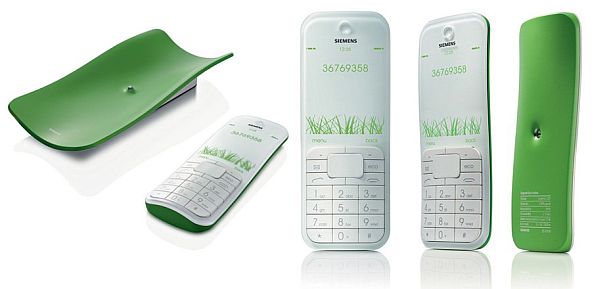
Siemens, the German electrical and electronics giant, exited the mobile phone market in 2005 , selling out to BenQ of Taiwan. It appears to be examining a re-entry with these “green” concept phones, designed for them by Formwelt Studio of Munich. The phone casing consists of of liquid wood and the phone battery recharges by solar cells located below the translucent keypad. Siemens is also considering a form of “green labeling” of electronic products as a way making the buyer environment conscious.
4. Toyota MOB electric car concept to utilize liquid wood
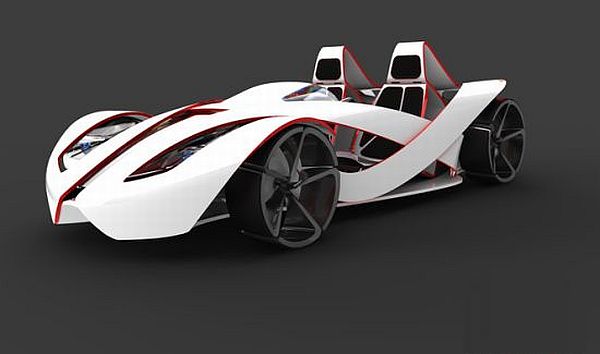
This Toyota Mob unusually shaped concept car has its body made of two liquid wood Mobius strips. Mobius strips are continuous strips with a twist in the middle so that the surface is continuous, without ever having to cross an edge. The two strips form the entire body of the car including its chassis and support the seats and dashboard. The car is designed with individual electric motors on each of its wheels. The designer is Jorge Marti Vidal of Valencia, Spain.
The use of liquid wood for a racing car body illustrates the strength and versatility in application of this material.
The Benefits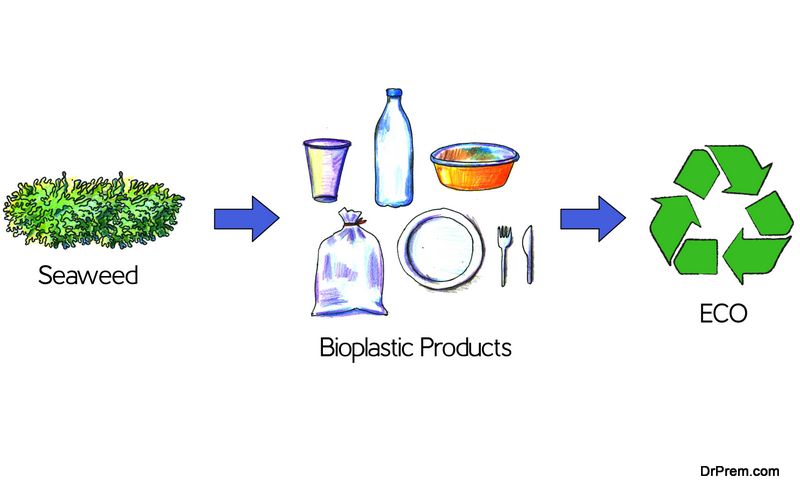
The development of a bio-plastic material to replace petro-plastics is a welcome development. In particular, since liquid wood consists of a byproduct of the wood pulp industry, which was previously a fuel, it has more attraction. The industry produces ome 50 million tonnes of lignin. It should yield a comparable weight of plastic replacement material. The range of applications suggests that liquid wood can replace plastics in many applications, without major problems.
Tecnaro, the German manufacturer of Arboform presently sells liquid wood at about $1.70 per lb, in the middle of price range for the widely used plastics which is from $0.70 to $ 3.40 per lb.
The Lowdown
The adoption of liquid wood has been stymied by there being only a single supplier of the material. Tecnaro only produced 275 tonnes of the material in 2010. Recently, it fought off a take-over bid from a larger chemicals company. Tecnaro says its slow growth is because of the long time taken for the new material to gain acceptance for various applications.
One concern with liquid wood has been with its sulfur content. Lignin separation in making wood pulp uses sulfur. Tecnaro says it uses high pressure hydrolysis to remove 90 percent of the sulfur content. The remaining 10 percent still is an area of concern.
The impact
The advent of a bio-plastic is a very welcome development in the battle to adopt sustainable technologies in our lives. The use of plastics is all pervading, from simple toys and disposable cups to computers, phones and other appliances. With these products present in large numbers around the world and getting frequently discarded, there has been concern on these ending up as ecological problems for the future. If liquid wood lives up to its promise, it can emerge as the solution as it is degradable and recyclable.


